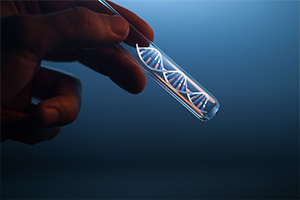DNA’s Second Layer
 For the first time, researchers have confirmed that DNA — the molecules that determine who we are at the most basic level — relies on more than a simple sequence of genes to express all of the complex functions that make up a living organism. Since Watson and Crick first described DNA as unique sequences of nucleotides (G, A, T and C) that determine what proteins are produced in the body, one question persisted: If every cell in the body has the same sequence, how can different organs perform such diverse functions? For decades, scientists have hypothesized that the key to how the sequences read out lies in the way DNA “folds.”
For the first time, researchers have confirmed that DNA — the molecules that determine who we are at the most basic level — relies on more than a simple sequence of genes to express all of the complex functions that make up a living organism. Since Watson and Crick first described DNA as unique sequences of nucleotides (G, A, T and C) that determine what proteins are produced in the body, one question persisted: If every cell in the body has the same sequence, how can different organs perform such diverse functions? For decades, scientists have hypothesized that the key to how the sequences read out lies in the way DNA “folds.”
Each cell contains about 2 meters (6 feet) of DNA molecules. In order to fit into a single cell, the molecules are folded into what are known as nucleosomes. This mechanical structure can change from cell to cell and affects which genes are expressed, so only those relevant to a particular organ are read. Researchers recently tested this hypothesis by simulating the formation of DNA nucleosomes in two different types of yeast. The results showed that mechanical cues indeed determined how the cells functioned.
The significance of this work lies in developing a new understanding of the fact that DNA mutations can occur as a result of two separate factors — the sequence and the mechanical structure — a finding that could revolutionize the science of genetics and genetic engineering.
For information: Helmut Schiessel, Leiden Institute of Physics, P. O. Box 9504, 2300 RA Leiden, The Netherlands; phone: +31-(0)72-527-5479; fax: +31-(0)71-527-5404; email: schiessel@lorentz.leidenuniv.nl; Web site: https://www.universiteitleiden.nl/en